The credit-card fueled spending spree came to a screeching halt in January, when according to the latest just released consumer credit data from the Fed, revolving credit tumbled by $3.8 billion. This was the first decline since February of 2016, and the biggest drop since December 2012.
On the other hand, the far more generous non-revolving, student and auto loans, rose once again, posting a $12.6 billion increase in January, bringing the total consumer credit increase to just $8.8 billion, one half of the $17 billion expected, and down materially from the revised December print of $14.8 billion.
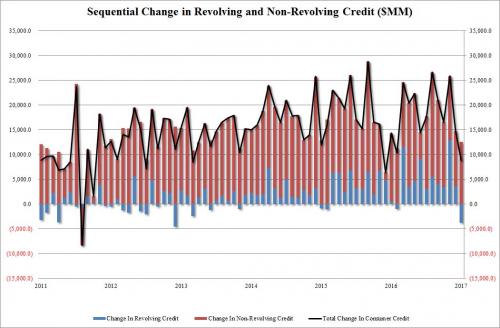
The sharp contraction in revolving, i.e. credit card debt, is seen more clearly in the chart below laying out only this component of total consumer credit:
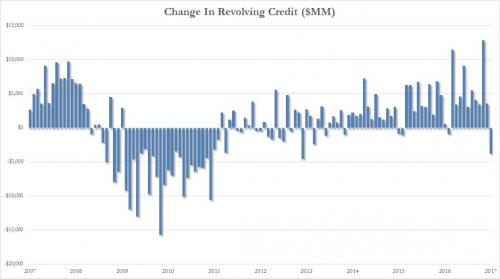
As expected, there was no change to the breakdown of student and auto loans, which remained at $1.4 trillion and $1.1 trillion, respectively, as this data series is updated once every quarter.
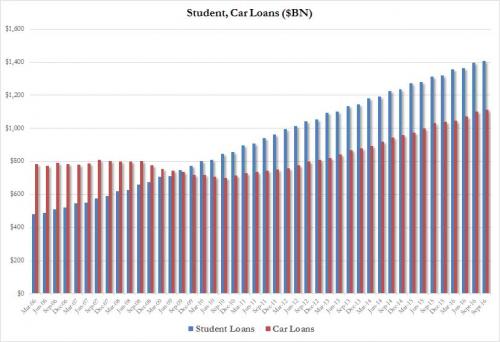
As traditionally happens in January, depository institutions saw a sharp, non-seasonally adjusted drop in their credit holdings, offset by a surge in Federal Government debt, which surged by $27.3 billion, the highest since last January.
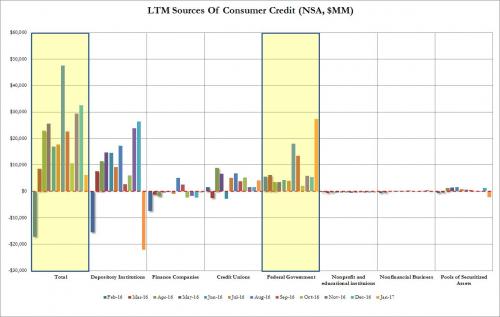
Finally, a chart showing just the federal government’s contribution to new sources of credit: what the chart shows is that since the start of 2009, total consumer loans owned by the Federal Government have increased by $1 trillion, accounting for all the loan expansion in the past 7 years.
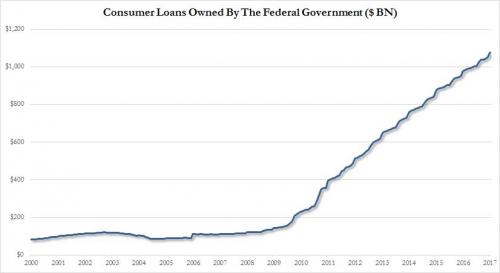











Leave A Comment